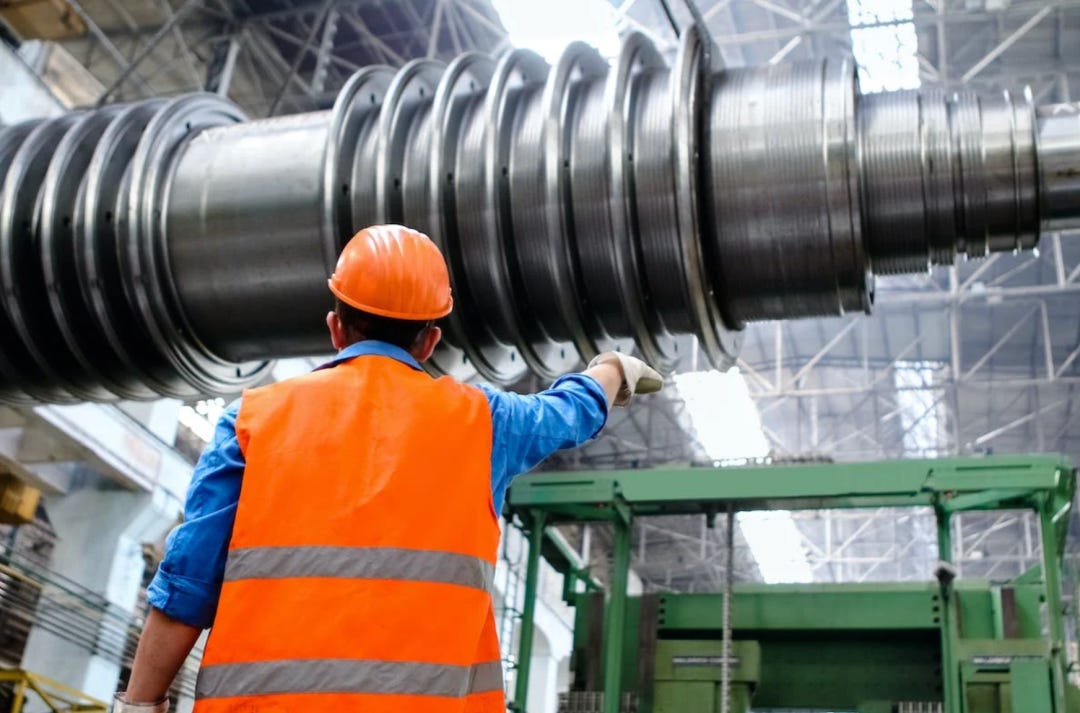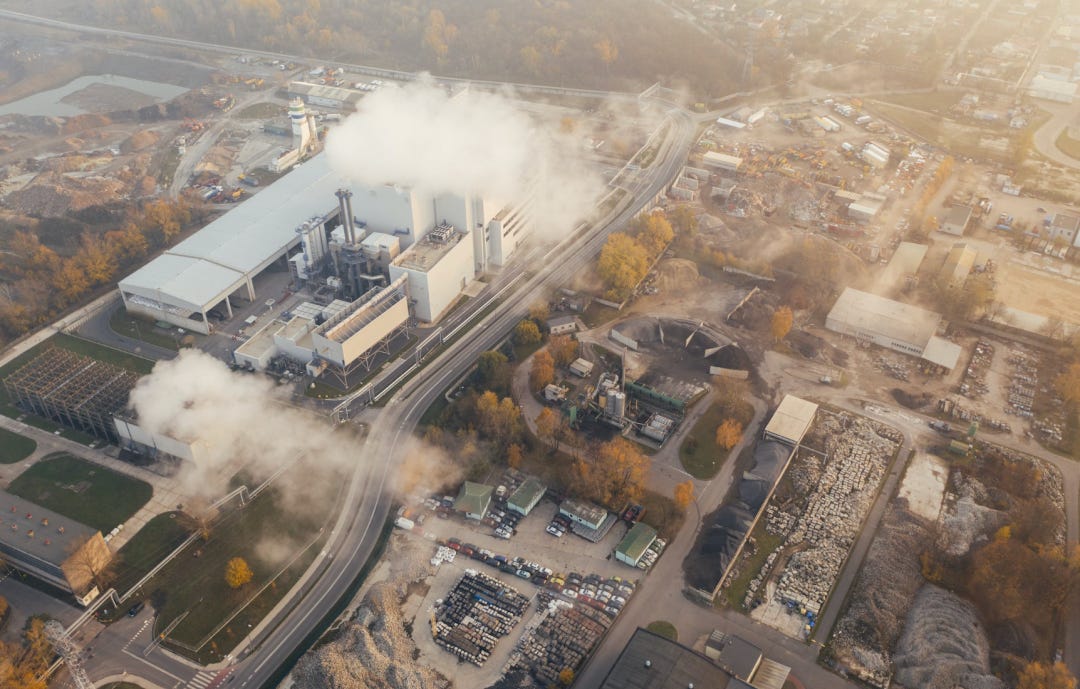Empowering Traditional Manufacturing with Technology: The New Topic Facing Business
Small and large traditional manufacturers have single-handedly created the trade miracle of "Made in China" spreading across the globe. However, they are now struggling with the core challenges of heavy burden of mission, thin profits, and heavy responsibilities. One effective way out of this adversity lies in technological, high-end, branding, and internationalization transformation, how to combine the next generation of technology trends (e.g., robots, Web3, AIGC, IoT), enhance technological innovation capabilities, and differentiate competitive barriers, has also become a new issue for every manufacturer.
In this issue, Quadrant Lab conducted this exclusive interview and strategic thinking, focusing on the common plight of domestic traditional industrial bosses, providing ways for business to seek balance in innovation and risk management, find certainty in uncertainty, and refine countermeasures. Keeping pace with the technological trends is the best solution to maintain global market competitiveness.
Last night, Ms. Z, female leader of a traditional manufacturing company said that she "couldn't sleep" and wanted to talk with me. Having already tucked myself in, I was drowsy back then. I tried my best to reboot my brain and it took me a while to finally understand what she was saying.
It turns out that Ms. Z's company is an extremely traditional manufacturing company, with a history of 27 years and business operations worldwide. Ms. Z is the third leader of the company and have just taken over a year. The previous two of leaders were Ms. Z's mother and elder brother.
Based on her description, I summarized the survival logic of the company over the past 30 years: starting business based on government relations and the founder's technical capabilities, launching with low prices and product customization, developing with the overall environment of reform and opening up, and expanding early into international markets, which help gain many overseas market share.
The dilemma Ms. Z is currently facing is that the company has always been a small and medium-sized enterprise, unable to compete with industry giants domestically, with a long-term market share close to zero. As the domestic market becomes saturated and competition intensifies, these industry giants are also turning their focus to overseas markets. Ms. Z is worried that once these large companies grasp the overseas situation and mobilize their huge resources, the international first-mover advantage painstakingly built by her company over the years will no longer exist.
In response, her strategies are as follows: 1. Strengthening services, quality, and brand to further consolidate and expand overseas markets, strengthen cooperation with existing major distributors, seek new partnerships, and even establish overseas factories. 2. Developing new product lines and exploring robot business related to the company's traditional core business.
Actually, after listening to the basic situation of her company and her major strategic approaches, I found out where her pain points lie.
In my opinion, her problem is universal, which is the "core dilemma of technological transformation in traditional manufacturing." From a macro perspective, since the reform and opening up, the improvement of China's enterprises in terms of systems, technology, and work methods has mainly relied on introduction and imitation. As time goes by, there are fewer things easy to follow and imitate, and the essence of foreign technologies is not so easy to learn. This has led to a stalemate.
In addition, in recent years, both domestic and international situations have become increasingly complex, and various industries, including traditional manufacturing, are treading on thin ice. Poor stability and weak strategic resilience are common. To deal with such complex challenges, companies need to deeply consider their own situation to find a path that suits them, which requires innovative thinking. Yet, what traditional manufacturing lacks precisely is innovative thinking.
To further elaborate, it is necessary to briefly discuss some characteristics of traditional manufacturing. Generally speaking, traditional manufacturing tends to be closed and conservative, and the cognition, vision, and thinking of many enterprise leaders and practitioners are also relatively limited, especially compared to those in the technology and internet industries. This is something that outsiders find hard to understand. The reasons for this are multifaceted. One of the resulting problems is that it is difficult for manufacturing to reform, let alone transform technologically.
Reform is difficult because companies and even the entire industries are accustomed to the past work modes, and this is impossible to change overnight. The process concerns countless links: workers in production line are unwilling to use digital tools (because it makes slacking off hard), heads of production departments refuse to accept meticulous quality inspection supervision (because it would deprive their arbitrary handling of materials), sales directors believe that the branding department is just there to assist customers (such as helping customers and distributors with promotional materials), and bosses think that direct manufacturing of products is the only way to contribute value to company...
A well-known truth is that humility and progressiveness lead to advancement, while stubbornness and self-seclusion lead to backwardness. Employees and executives can slack off and avoid thinking, but bosses must maintain constant improvement and create breakthroughs. Otherwise, they will be on the precipice of doom of the organization sooner or later.
As a result, there are a group of bosses similar to Ms. Z—whether they are second-generation successors or founding veterans—who, compared to their peers, have a certain foresight and depth of thinking. They have seen potential crises (or may have been pressured by crises that have already arrived) and want to break the deadlock or prevent crises. With high-tech industries represented by artificial intelligence gaining momentum in recent years, some people have turned their attention to high-tech products, and robots are one of them. This is actually the fundamental reason why many traditional companies are exploring technological transformation. Although it carries a strong flavor of "riding the trend," after all, technology and manufacturing are related and cannot be considered as forced integration. Taking Ms. Z as an example, there is indeed a certain connection between the company's traditional business and robotics—at least the connection can be made if there is an outstanding brand architect.
However, in an organization lacking of innovation, it is really difficult to cultivate the flowers of innovation. I will briefly analyze this from three points.
Firstly, new businesses, especially in frontier fields like robotics, inevitably differ from old businesses in terms of talent demand, resource allocation, work methods, and cognitive levels. This will inevitably give rise to conflicts of interest and office politics between the "reformists" and "conservatives," and the end result is often not only the stagnation in the new business but also the disruption of the overall operational efficiency and corporate culture of the organization. If the reform does not yield results in the short term, the "conservatives" will become even more aggressive, seizing opportunity to attack. They will claim that the problems they are facing should all be attributed to the "reformists," arguing that the "reformists" not only fail to bring value but also disrupt stability and unity.
At this point, if the boss lacks determination or plays tricks, they may feign ignorance and blame the person in charge of the new business for their incompetence, and even remove them from their position. This serves as a "declaration of allegiance" to the traditional forces. Subsequently, they may either restart the reform in a different way or simply abandon it altogether...
Secondly, the biggest characteristic of traditional manufacturing, as I summarized, is the nine words: grand mission, heavy burden, thin profit. When I say "grand mission," I mean the significance to the nation and the economy. When I say "heavy burden," it is not only because manufacturing companies need to buy a bunch of equipment and machinery to produce anything , but also because the rigid, boring, and even dirty factory buildings deter young people, preventing fresh blood and innovative thinking from flowing in, leading to even greater stagnation in the closed traditional manufacturing industry. Isn't this a burden? When I say "thin profit," it also has two meanings: one is that a huge factory and a bunch of machines can only bring little profit to the boss, and the other is that traditional manufacturing has long been overlooked by the public, creating a kind of "injustice": clearly the cornerstone of the human economy, yet always overlooked by public opinion, while many so-called high-tech companies that haven't made money yet and the internet industry that exploits employees are reported by the media and talked about by people every day...
It is a long process for an organization to break free from the nine words and turn passive into initial. Technological transformation is not just about adding a technology business line; it means a comprehensive transformation. This requires leaders to have foresight, strategic resilience, and the ability to select talent, among other qualities and conditions.
Thirdly, the technology industry has its own difficulties and problems. If companies rush into technology without thinking through, the result will only be more new problems added to the old ones, making it impossible to coordinate, and causing new chaos. For example, when doing robotics, should the company develop and produce them itself or outsource them? How to integrate the robotics business with the company's traditional business (integration of productivity, personnel, etc.)? Robots themselves are actually within the scope of the manufacturing industry, but they require a great deal of innovation to irrigate. Can the existing corporate genes support this?
The larger the system, the stronger the individualization, and the more difficult it is to standardize and coordinate. For example, equipment is often more difficult to standardize and coordinate than control circuits; production lines are often more difficult to standardize and coordinate than equipment; factories are often more difficult to standardize and coordinate than production lines; a company is often more difficult to standardize and coordinate than a department...
Ms. Z's narrative basically confirms my judgment above. Over the past two years, she has worked hard according to the two strategic routes mentioned earlier, but progress has not been smooth. The outcome is similar to what I guessed earlier, and she has since become confused.
My suggestion for Ms. Z is to approach the situation with her colleagues from three aspects.
① Break through mental bottlenecks and admit their own narrow-mindedness
The leaders of traditional manufacturing industries need to clearly recognize that when an organization encounters problems, it is undoubtedly the fault of those in power. Only by acknowledging their own limitations, admitting that they, who hold power and wealth, are actually outdated, can there be hope for change. Too many bosses of traditional companies, although aware of the need for transformation, are afraid to confront their own flaws. They always cling to their outdated beliefs, maintaining the facade and demeanor of successful individuals every day. It is precisely because of this narrow-mindedness that these people cannot accept new ideas, cannot accommodate ambitious young people, and naturally cannot make good use of people or choose the right people.
② Don't solely count on HR to change the corporate culture
Somehow, many people think of corporate culture as within the scope of HR's work. Personally, I believe it should be led by the boss based on continuous improvement of their own cognition, with coordination between the branding department and the HR department, and the participation of the entire company. Corporate culture is not just an empty talk; it directly determines whether the company's cohesion and the way employees think can lead to the success of company transformation.
③ New embryos need new soil
Taking robotics as an example again, the technology, production, suppliers, branding models, financial requirements, etc., required for robotics are different from traditional manufacturing industries. It is futile to rely on the company's existing sales channels, agents, finance departments, etc., to support robotics businesses, and the chances of failure are high.
Finally, there are some additional points.
Innovation and transformation in traditional manufacturing industries are never easy tasks and it’s just natural to encounter uncertainty. Some may be deterred by uncertainty, fearing that newly purchased equipment will not be profitable, new business lines will fail, or newly hired executives will not meet expectations. The way to deal with uncertainty is crucial. Some uncertainties should be allowed to exist, while others must be eliminated. For example, principles must be clear, but uncertainties can be allowed to exist in performance indicators; the magnitude of value creation may be unclear, but the underlying logic of value creation must be agreed upon, and so on.






